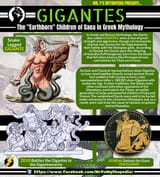Search Results
6/29/2025, 8:21:27 PM
>>17800190
>I think one of the major reasons for the confusion on this subject is that so many people have promoted the view that the word Nephilim comes from the Hebrew verb naphal (“to fall”). Hence, they argue that the term means “fallen ones.” But this common argument is false. If one wanted to use naphal as a participle (i.e. “fallen ones”), the word would become nephulim or nophelim—NOT Nephilim. The word Nephilim actually comes from the Aramaic noun Naphil. When this word is made plural, it becomes Nephilin, and when brought into Hebrew, it becomes Nephilim
>What does the Aramaic word Naphil mean? It is the word for “giant.” So Nephilim really does mean “giants,” which is exactly how the KJV and NKJV have translated it. It’s also exactly how the Nephilim are described in the only other passage that mentions their name. When the spies searched out the land we are told in Numbers 13:22 that they saw the descendants of Anak in Hebron (Ahiman, Sheshai, Talmai). When they reported back and tried to persuade the people not to enter the land, the spies said that the people there were of great stature and that they saw the Nephilim there
>The name "Gigantes" is usually taken to imply "earth-born", and Hesiod's Theogony makes this explicit by having the Giants be the offspring of Gaia (Earth)
>Archaic and Classical representations show Gigantes as man-sized hoplites (heavily armed ancient Greek foot soldiers) fully human in form. Later representations (after c. 380 BC) show Gigantes with snakes for legs
>Over time, descriptions of the Giants make them less human, more monstrous and more "gigantic". According to Apollodorus the Giants had great size and strength, a frightening appearance, with long hair and beards and scaly feet. Ovid makes them "serpent-footed" with a "hundred arms", and Nonnus has them "serpent-haired"
>I think one of the major reasons for the confusion on this subject is that so many people have promoted the view that the word Nephilim comes from the Hebrew verb naphal (“to fall”). Hence, they argue that the term means “fallen ones.” But this common argument is false. If one wanted to use naphal as a participle (i.e. “fallen ones”), the word would become nephulim or nophelim—NOT Nephilim. The word Nephilim actually comes from the Aramaic noun Naphil. When this word is made plural, it becomes Nephilin, and when brought into Hebrew, it becomes Nephilim
>What does the Aramaic word Naphil mean? It is the word for “giant.” So Nephilim really does mean “giants,” which is exactly how the KJV and NKJV have translated it. It’s also exactly how the Nephilim are described in the only other passage that mentions their name. When the spies searched out the land we are told in Numbers 13:22 that they saw the descendants of Anak in Hebron (Ahiman, Sheshai, Talmai). When they reported back and tried to persuade the people not to enter the land, the spies said that the people there were of great stature and that they saw the Nephilim there
>The name "Gigantes" is usually taken to imply "earth-born", and Hesiod's Theogony makes this explicit by having the Giants be the offspring of Gaia (Earth)
>Archaic and Classical representations show Gigantes as man-sized hoplites (heavily armed ancient Greek foot soldiers) fully human in form. Later representations (after c. 380 BC) show Gigantes with snakes for legs
>Over time, descriptions of the Giants make them less human, more monstrous and more "gigantic". According to Apollodorus the Giants had great size and strength, a frightening appearance, with long hair and beards and scaly feet. Ovid makes them "serpent-footed" with a "hundred arms", and Nonnus has them "serpent-haired"
Page 1
